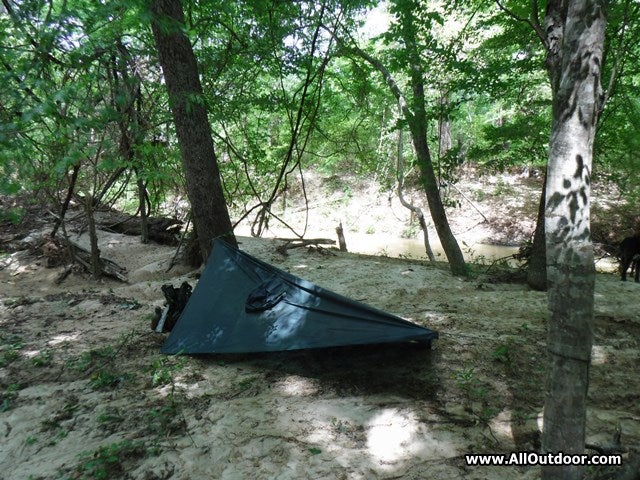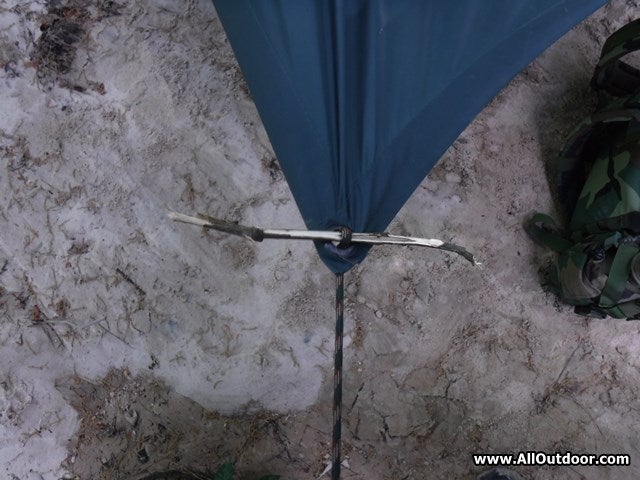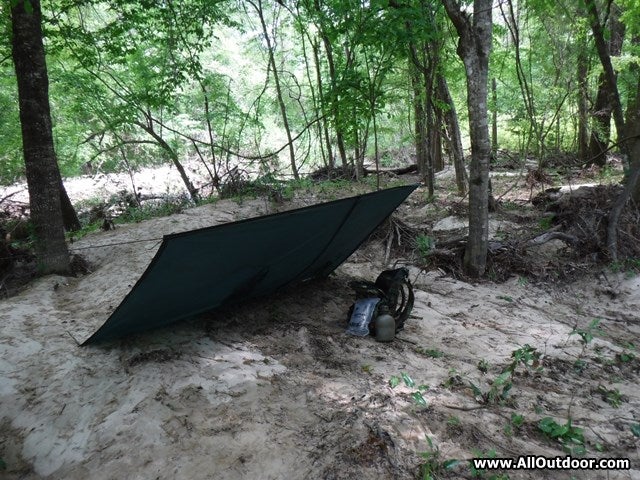How to Build an Emergency Poncho Shelter
Kevin Felts 04.03.18

If there is one item which feels redundant, it has to be the poncho. Depending on the type of poncho (civilian, military, or disposable) they can sometimes be bulky and heavy. If the weather is clear with no chance of rain, why bother carrying one?
The rain poncho can serve two purposes:
- Keep the person dry while walking.
- Emergency shelter.
Truth be told, the rain poncho is maybe one of the most important items in a hiking gear list. It only takes a few minutes to go from the backpack to completed shelter.
Construct an Emergency Poncho Shelter
- Pick a nice flat location with trees several feet apart.
- Gather four straight sticks about 1/4 inch in diameter and maybe 4 – 6 inches long.
- Lay your cord on the ground between two trees.
- Lay the edge of the poncho on the cord.
- Make a loop with the cord and push the loop through a grommet hole.
- Insert one stick through the loop.
- Pull slack out until the loop is snug against the stick.
- Repeat on other grommet.
- Tie one end of the cord to a tree.
- Tie the other end of the cord to another tree.
- Careful not to get the cord too tight.
- Stack the other grommet holes to the ground.
Congratulations, you just built an emergency shelter in less than five minutes.
Using the loops, the tightness of the poncho can be adjusted. Adjust the loops on each end to make the poncho firm without being too tight.
There are a couple of different ways to build the shelter. One way is to the poncho looks like a pup tent. Another way is so the shelter looks like a lean-to.
Some people buy cheap disposable ponchos. Usually, those cheap ponchos do not have grommet holes. If that is the situation, place a small pebble under the poncho material, then tie the cord around the pebble and the poncho material.
When shopping for a poncho, go ahead and spend the few extra dollars and get a quality one.
Maybe the reader can provide some tips and suggestions on how they build poncho shelters.
Final Thoughts
Before I set up camp for the night, I look at the area and what is near the picked out spot. Some of the things I look and listen for:
- Signs of recent flooding.
- Sloughs.
- Listen for frogs.
Why are sloughs and frogs a big deal? What preys on frogs? Snakes. Here in southeast Texas chances are a cottonmouth will be out after the sun goes down looking for frogs. Putting a little bit of distance between a slough full of frogs and the camp site would probably be a wise idea.


